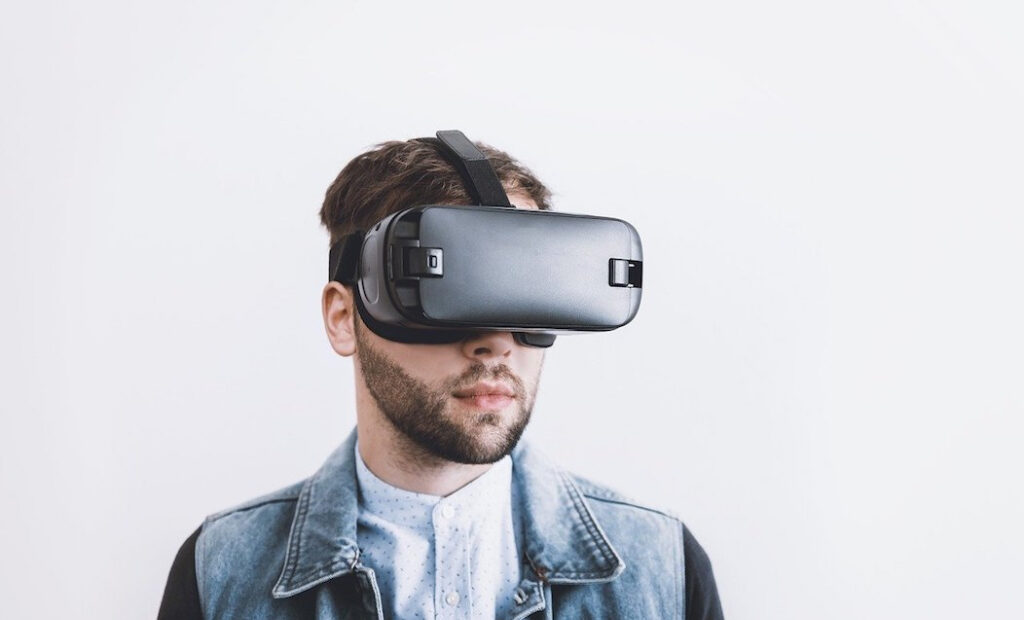Exploring the world of web augmented reality: The impact of web AR

Augmented Reality (AR) has emerged as a transformative technology, reshaping the way we interact with the digital and physical worlds. In recent years, a notable evolution within the AR landscape has been the rise of Web Augmented Reality (Web AR). Web AR leverages the power of the internet to deliver immersive experiences directly through web browsers, it is an accessible feature that you can easily try online Web AR Demo In this article, we will delve into the exciting world of Web AR, exploring its foundations, applications, and the impact it has on user engagement and accessibility.
Understanding Web Augmented Reality:
1. Foundations of web AR
- Web AR utilizes standard web technologies, such as HTML, CSS, and JavaScript, to bring augmented reality experiences directly to web browsers. This eliminates the need for users to install specific apps, making AR more accessible and user-friendly.
- By leveraging Web AR frameworks and libraries, developers can seamlessly integrate AR elements into existing websites, opening up new possibilities for interactive and engaging content.
2. Device compatibility
- Web AR is designed to be compatible with a wide range of devices, including smartphones, tablets, and desktop computers. This versatility ensures that users can access AR experiences using the devices they already own, without the constraints of platform-specific limitations.
- The use of web browsers as the delivery mechanism for AR content means that users can enjoy immersive experiences across various operating systems, making Web AR a cross-platform solution.
Applications of Web AR
1. Marketing and Advertising
- Web AR has found extensive applications in marketing and advertising campaigns. Brands can create interactive AR experiences accessible through a simple web link, allowing users to engage with products or promotional content directly from their browsers.
- Examples include virtual try-on experiences, 3D product visualizations, and interactive advertisements that users can experience without leaving the web page.
2. E-Commerce and Retail
- In the realm of e-commerce, Web AR has revolutionized the way users shop online. Virtual try-on features for apparel, accessories, and even furniture enable users to visualize products in their real-world environment before making purchasing decisions.
- Retailers can enhance product listings with AR elements, providing customers with a more interactive and informed shopping experience.
3. Education and training
- Web AR is making strides in the education sector by offering immersive learning experiences. Educational content, such as interactive 3D models or historical reconstructions, can be embedded directly into educational websites.
- Training programs can leverage Web AR for simulations and hands-on experiences, enhancing the effectiveness of learning modules.
4. Tourism and exploration
- Web AR is transforming the way users explore and learn about new places. Virtual tours, historical recreations, and interactive maps can be accessed through web browsers, providing users with informative and engaging experiences.
- Augmented reality guides enhance the tourism industry by offering real-time information and enriching the overall visitor experience.
5. Entertainment and gaming
- Web AR has ventured into the realm of entertainment and gaming, bringing AR experiences to audiences without the need for specialized apps. Interactive storytelling, games, and immersive entertainment content can be seamlessly integrated into websites.
- This opens up new possibilities for content creators to engage audiences directly through web-based AR experiences, expanding the reach of their creations.
6. Collaboration and remote assistance
- Web AR facilitates collaborative experiences and remote assistance. Users can share AR content through web links, enabling multiple participants to engage in collaborative projects or receive remote guidance.
- This has practical applications in fields such as architecture, engineering, and healthcare, where visualizing and interacting with 3D models remotely is essential.
Advantages of web AR
1. Accessibility and User Reach:
- One of the primary advantages of Web AR is its accessibility. Users can access AR content directly through their web browsers, eliminating the barrier of app downloads. This broadens the audience reach and encourages more users to engage with AR experiences.
2. Cross-Platform Compatibility:
- Web AR is inherently cross-platform, compatible with a variety of devices and operating systems. This ensures a consistent experience for users regardless of the device they are using, fostering inclusivity and convenience.
3. Seamless Integration with Websites:
- Web AR seamlessly integrates with existing websites, allowing developers to enhance web pages with AR elements. This integration is user-friendly, requiring only a web link to access AR content, making it an ideal solution for businesses and content creators.
4. Cost-Effectiveness:
- Developing Web AR experiences can be cost-effective compared to creating standalone AR applications. The use of standard web technologies and frameworks streamlines development processes, making it more budget-friendly for businesses looking to incorporate AR into their online presence.
5. Instant User Engagement:
- Users can engage with Web AR experiences instantly, without the need for lengthy downloads or installations. This instant accessibility encourages spontaneous interaction, making it more likely for users to explore and share AR content.
Future trends and innovations
1. Advanced AR Capabilities:
- The future of Web AR will likely see advancements in AR capabilities, including improved object recognition, better tracking, and more sophisticated interactions. This will contribute to more immersive and realistic AR experiences directly within web browsers.
2. Integration with WebXR:
- WebXR, an API for virtual and augmented reality on the web, is expected to play a significant role in the evolution of Web AR. The integration of WebXR will provide developers with enhanced tools and capabilities for creating compelling AR content.
3. Evolving Standards and Frameworks:
- As Web AR gains traction, there will be a focus on evolving standards and frameworks. This includes the development of standardized practices, improved performance, and enhanced security measures to ensure a consistent and secure user experience.
4. Commerce and Shopping Experiences:
- Web AR will continue to redefine online shopping experiences. Enhanced virtual try-on features, interactive product demonstrations, and immersive shopping environments will become commonplace, offering users a more dynamic and engaging e-commerce journey.
5. Collaborative Workspaces:
- Web AR’s potential in collaborative workspaces will expand, allowing teams to collaborate on 3D models, simulations, and projects directly through web browsers. This has implications for remote work scenarios and distributed teams.
Challenges and considerations
While Web AR presents numerous opportunities, there are challenges and considerations that developers and businesses should be mindful of:
1. Performance and Optimisation:
- Ensuring smooth performance and optimization of AR experiences on various devices can be a challenge. Developers need to strike a balance between delivering rich content and maintaining performance across different hardware specifications.
2. Security and Privacy:
- Security and privacy concerns are paramount, especially when dealing with AR experiences that may require access to a user’s camera or location. Implementing robust security measures and obtaining user consent for data usage are critical considerations.
3. User Education:
- Many users may not be familiar with Web AR, and there might be a need for user education. Providing clear instructions on how to access and interact with AR content through web browsers can enhance the user experience.
4. Limited Device Capabilities:
- While Web AR aims for broad compatibility, certain advanced AR features may be limited on certain devices. Developers should be aware of the capabilities of different devices and adjust experiences accordingly.
5. Network Dependence:
- Web AR experiences are dependent on network connectivity. Ensuring a seamless experience requires considering scenarios where users may have limited or no internet access.
Conclusion
Web Augmented Reality (Web AR) represents a pivotal shift in the landscape of augmented reality, making immersive experiences more accessible and user-friendly. From marketing and e-commerce to education and entertainment, Web AR is permeating various sectors, providing a versatile platform for creativity and engagement.
As technology continues to advance, Web AR is poised to play an increasingly integral role in how we interact with digital content on the web. The fusion of standard web technologies with augmented reality opens up endless possibilities, and the evolution of standards and frameworks will likely contribute to the continued growth and adoption of Web AR across industries. Ultimately, Web AR is not just a technological advancement; it’s a gateway to a more interactive, inclusive, and dynamic web experience for users around the globe.
The editorial unit
























Facebook
Twitter
Instagram
YouTube
RSS